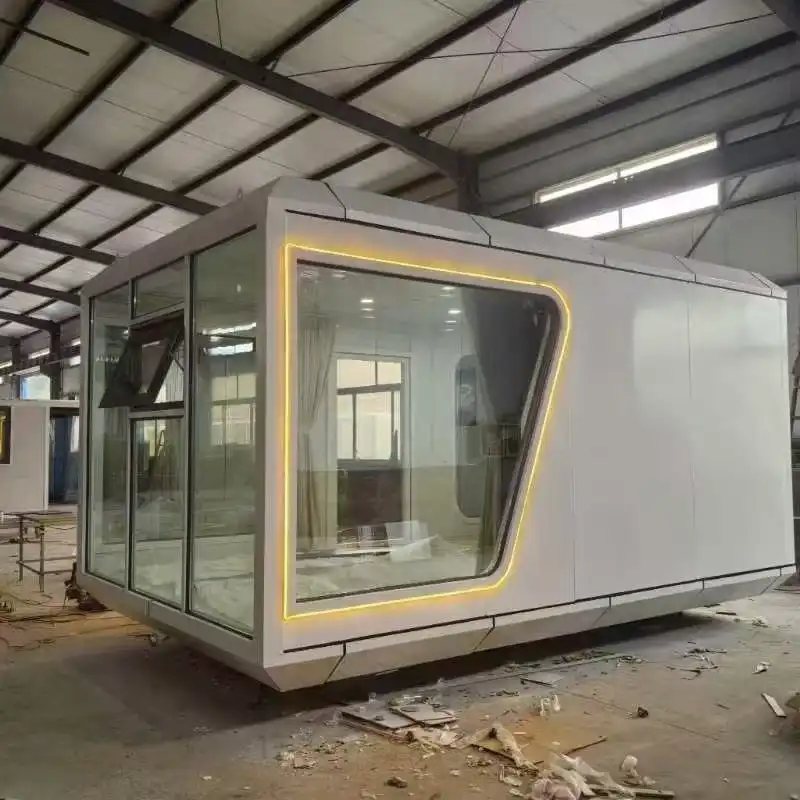The Perfect Marriage of Style and Functionality
Elevating Interior Design with 3D Textures
Decorative wall insulation panels have completely transformed how we think about interior design. Rather than settling for flat, lifeless walls, homeowners and designers can now use panels that introduce striking three-dimensional textures and patterns. These dynamic surfaces turn ordinary rooms into visually engaging spaces that feel more personalized and artistic. From soft, understated geometry to bold and organic patterns, the range of available styles is incredibly broad. You can effortlessly find a panel that either blends seamlessly with your décor or serves as a dramatic focal point on its own.
Customization: Tailoring Panels to Your Vision
A standout feature of decorative wall insulation panels is their exceptional level of customization, which opens up endless possibilities for creative interior design. Manufacturers offer an impressive variety of textures, surface finishes, colors, and even unique panel shapes, giving both homeowners and interior designers the tools to craft a space that truly aligns with specific tastes and functional needs.
Whether you prefer a sleek, contemporary vibe or a warm, traditional setting, there’s a panel that fits perfectly. This flexibility ensures that every room can feel unique and personal, turning ordinary walls into expressive focal points that define the atmosphere of your living environment.
Superior Insulation for Energy-Efficient Homes
Thermal Performance That Impresses
Though their visual appeal is a major draw, decorative wall insulation panels also provide outstanding thermal benefits. Engineered with energy efficiency in mind, these panels help maintain a stable indoor climate all year round. Thanks to a low thermal conductivity rating of just 0.018W/m·K and a thermal resistance value of 2.09m²·K/W, they reduce heat loss and gain significantly. This means your space stays cooler in the summer and warmer in the winter, which can lead to lower utility bills and improved indoor comfort—making them a smart investment for energy-conscious homeowners.
Eco-Friendly Solution for Sustainable Living
As sustainability becomes more important in construction and home improvement, decorative wall insulation panels offer a forward-thinking solution. Many panels are manufactured using environmentally responsible materials and production methods, helping to minimize environmental harm.
Their ability to boost insulation performance also means less energy is required for heating and cooling, reducing both emissions and costs over time. Whether you're designing a new space or upgrading an existing one, incorporating these eco-friendly panels supports a greener future while maintaining high standards for design and performance.
Durability and Safety: Built to Last
Weather-Resistant and Long-Lasting
Decorative wall insulation panels are built to last, offering strong protection against the elements and everyday wear. Their waterproof rating of 0.0008 means they effectively prevent moisture from penetrating, making them ideal for damp or humid environments. Additionally, these panels can withstand wind pressures up to 8.0 Kpa, ensuring stability even in harsh weather. Their corrosion-resistant nature helps protect against rust and environmental damage, so the panels stay attractive and functional for many years, unlike traditional wall coverings that may deteriorate more quickly.
Fire Safety and Peace of Mind
Safety is a top priority when selecting building materials, and decorative wall insulation panels deliver excellent performance in this area. Constructed from non-combustible components, these panels come with certified fire-protection ratings of B1 or B2, meeting stringent industry safety requirements. This fire-resistant quality adds a critical layer of protection to any living or working space.
For homeowners and business operators, having walls that help prevent the spread of fire brings significant peace of mind. Choosing these panels means prioritizing both style and safety, making them an ideal solution for creating secure, attractive, and code-compliant interiors.
Installing decorative wall insulation panels is a straightforward and efficient process, thanks to their smart, user-friendly engineering. These panels are compatible with various installation techniques, including mechanical fasteners, strong adhesives, or the use of furring strips for enhanced structural support. Designed with practical dimensions, they feature interior thicknesses of 10mm and exterior options of either 16mm or 20mm.
Their standard widths—450mm for interior applications and 383mm for exterior use—make them suitable for a wide range of design scenarios, from compact residential rooms to larger commercial spaces. Combined with customizable lengths, this adaptability ensures a precise fit for different wall dimensions, simplifying the installation process whether handled by DIY enthusiasts or professional contractors.
Conclusion
Decorative wall insulation panels offer an unparalleled combination of style, functionality, and energy efficiency. By choosing these innovative panels, you're not just enhancing the visual appeal of your space; you're investing in a sustainable, durable, and cost-effective solution for your home or office. If you're ready to transform your walls and experience the benefits of superior insulation, it's time to explore the world of decorative wall insulation panels. For more information on how these panels can elevate your space, contact us at info@sdqsc.com.
References
1.Smith, J., & Lee, A. (2021). Advances in Decorative Wall Panel Technologies for Energy Efficiency. Journal of Sustainable Building Materials, 15(3), 145–159.
2.Chen, L., & Kumar, S. (2020). Thermal Performance and Insulation Properties of Modern Wall Panels. Energy and Buildings, 210, 109716.
3.Davis, R., & Patel, M. (2019). The Role of 3D Textured Wall Panels in Contemporary Interior Design. Interior Architecture Review, 24(2), 78–89.
4.Wang, H., & Zhao, Y. (2022). Environmental Benefits of Eco-Friendly Building Materials: A Focus on Insulated Wall Panels. Journal of Green Construction, 18(1), 34–48.
5.Thompson, E., & Garcia, F. (2018). Fire Safety in Building Materials: Evaluating B1/B2 Rated Insulation Panels. Fire Safety Journal, 99, 45–52.
6.Martinez, P., & Huang, X. (2023). Durability and Weather Resistance of Composite Wall Panels in Harsh Climates. Construction and Building Materials, 357, 129428.